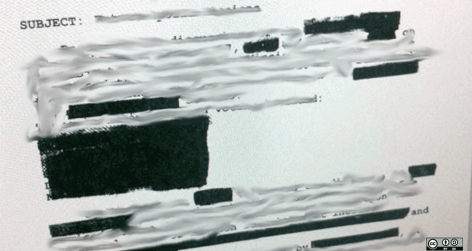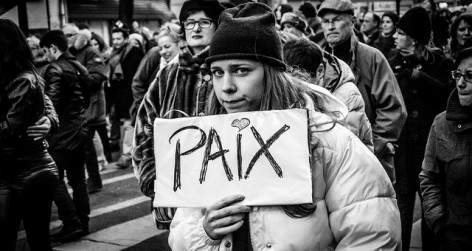Im März 2012 filmte sich der selbsternannte Glaubenskrieger Mohammed Merah dabei, wie er in Frankreich sieben Menschen ermordete. Al-Jazeera entschied sich, das Video nicht auszustrahlen, schreibt Jeff Howard.

Der Fall
Zwischen dem 11. und 19. März 2012 tötete Mohammed Merah, ein Franzose algerischer Abstammung, der sich selbst als Glaubenskrieger bezeichnete, sieben Menschen und verletzte fünf weitere, als er eine Serie von Angriffen auf französische Soldaten und jüdische Schüler in Montauban und Toulouse verübte. Merah gab an, den Tod palästinensischer Kinder rächen und gegen Frankreichs Beteiligung an Kriegen gegen Muslime protestieren zu wollen. Am 22. März erschoss ihn die französische Polizei nachdem er sich viele Stunden lang in seiner Wohnung verschanzt hatte. Merah behauptete, im Auftrag al-Qaidas gehandelt zu haben, jedoch ist noch immer unklar, ob er jemals in direkter Verbindung mit der Terrororganisation gestanden hatte. Ein pakistanischer Ableger der Taliban gab vor kurzem an, ihn ausgebildet zu haben.
Kurz nach den Angriffen erhielt der arabische Sender Al-Jazeera eine Videoaufzeichnung der Morde, die Merah selbst gefilmt hatte indem er sich während der Angriffe eine Kamera um die Brust schnallte. Der Film war mit Versen aus dem Koran und religiöser Musik hinterlegt. Familienmitglieder der Opfer baten Al-Jazeera, das Video nicht zu zeigen, und der damalige französische Präsident Nicolas Sarkozy wiederholte diese Bitte, als er öffentlich sagte: “Ich bitte die Verantwortlichen aller Fernsehsender, die im Besitz dieser Bilder sind, sie aus Respekt vor den Opfern und aus Respekt vor der [französischen] Republik nicht auszustrahlen.” Al-Jazeera berief sich auf seine eigenen ethischen Richtlinien und entschied, das Video nicht auszustrahlen, da es keine neuen Informationen enthalte, sondern nur aus Schüssen, Schreien und der Stimme des Mörders und seiner Opfer bestehe. Al-Jazeeras ethische Richtlinien besagen, dass sich der Sender dazu verpflichtet, “alle unsere Zuschauer mit angemessenem Respekt zu behandeln und jedes Ereignis mit der angemessenen Aufmerksamkeit zu behandeln, um eine klare, den Fakten entsprechende und korrekte Berichterstattung zu gewähren, die jedoch auch die Gefühle der Opfer von Kriminalität, Krieg, Verfolgung und Unglück beachtet, sowie die Gefühle ihrer Familien und unserer Zuschauer. Ebenso bemühen wir uns, die Privatsphäre Einzelner zu respektieren und dem öffentlichen Anstand zu entsprechen.”























reply report Report comment
To the author opinion, it is patently wrong to describe murder as „objectively offensive“. One need only look as far as the glorification of violence in nearly all commercial media to see this. It is not only depictions of it that are popular; real life footage is hungrily devoured by voyeuristic viewers as well. For example: http://www.youtube.com/watch?v=UsA9VtQ_uLg
The video has over 1,000,000 views, and an overwhelming „like“ ratio. Why is it allowed? Is it because the victims are little white blobs? Is it because we cannot see their faces? They are the „bad guys“ getting „what they deserve“?
This, to me, is far more disrespectful of identity and individualism than broadcasting murders. Picking and choosing which individual deserves respect undermines the entire argument to an extreme degree.
Perhaps the video related to the case study should not be aired on public television. Perhaps it should not be made available. But the reasoning behind this is inherently hypocritical, and disgusting at that.
reply report Report comment
From my personal point of view, i think that the omision of the footage was a totally right decision.
First of all i am totally agree about citizens getting freedom of speech and the most accurate information possible about anything that is relevant to anybody. But on the other hand, i think that the murder has been cover very good, as all the details have been explain. Furthermore, the information about the arrest and death of the terrorist has been covered very accuretaly.
Why i am against the diffusion of the video? First of all, most of the victims are kids, by this i mean that they are underage, therefore under the responsability of the parents. And which mother/father wants to recreate and live again the death of their kid? I think that it is not necessary and image or sound in this case. With some written information is enough.
Secondly, i think that the video could be a source of „Inspiration“ for other terrorist attacks, and therefore i think we don’t need to do more publicity about the terrorist attack. Because everybody knows that positive/negative publicity is the best way to get known and increase the followers.
Finally, i think that besides those ideas, in order to respect the victims, it should be somehting private, for respecting their privacy and honor.
In conclusion, it was an excellent idea to ban the video, and i don’t see that the political pressure was something negative, at this moment i think it was an act showing respect for the victims. Sometimes is better to avoid information, because it is not going to add more details, but just some macabracy.